-
RESEARCH01-01-2018
Family health strategy: relevance to the functional capacity of older people
Revista Brasileira de Enfermagem. 2018;71:740-746
Abstract
RESEARCHFamily health strategy: relevance to the functional capacity of older people
Revista Brasileira de Enfermagem. 2018;71:740-746
DOI 10.1590/0034-7167-2017-0078
Views0See moreABSTRACT
Objective:
to identify the functional capacity of older people based on their performance on basic activities of daily living.
Method:
a cross-sectional study, carried out through the record of the Family Health teams working in the urban area of a city in northern Minas Gerais, in 2015. To assess the functional capacity of 373 older people, the Katz Scale was applied, which includes dimensions on the performance of daily living activities. The interviews took place in the participants’ households.
Results:
of the total participants, 6.9% had some degree of dependence. Those aged over 80 years old and were living without a partner had about three times more chances of presenting higher levels of functional dependence.
Conclusion:
most older people enrolled in a Family Health Strategy had their functional capacity preserved.
-
RESEARCH01-01-2018
Assessment of ulceration risk in diabetic individuals
Revista Brasileira de Enfermagem. 2018;71:733-739
Abstract
RESEARCHAssessment of ulceration risk in diabetic individuals
Revista Brasileira de Enfermagem. 2018;71:733-739
DOI 10.1590/0034-7167-2017-0337
Views0See moreABSTRACT
Objective:
To identify the risk factors for foot ulceration through the tracing of diabetic peripheral neuropathy and peripheral arterial disease in individuals with type I and II diabetes, who were assisted in reference centers of the Federal District, Brazil.
Method:
a cross-sectional and analytical study, with the assessment of 117 individuals in outpatient clinics of the Federal District. Continuous variables were compared through Mann-Whitney test, and categorized variables, through Chi-square test for univariate analysis and Logistics regression test for multivariate analysis.
Results:
painful diabetic peripheral neuropathy was present in 37 (75.5%) of the individuals with neuropathy. Deformities and loss of protective plant sensibility were related to neuropathy (p=0.014 and p=0.001, respectively). Of the 40 (34.2%) individuals in the sample who presented peripheral arterial disease, 26 (65%) presented calcification risk.
Conclusion:
signs of painful peripheral polyneuropathy, peripheral arterial disease, deformities, loss of protective plantar sensibility, and dry skin were identified as risk factors for ulceration.
-
RESEARCH01-01-2018
Aging and quality of life of elderly people in rural areas
Revista Brasileira de Enfermagem. 2018;71:724-732
Abstract
RESEARCHAging and quality of life of elderly people in rural areas
Revista Brasileira de Enfermagem. 2018;71:724-732
DOI 10.1590/0034-7167-2017-0149
Views0See moreABSTRACT
Objective:
To evaluate the quality of life and health of elderly in rural areas of Minas Gerais State’s center-west.
Method:
Cross-sectional study, in four municipalities of Minas Gerais State, by interviewing elderly people. Associations between socio-demographic and quality of life variables were tested, separated into “satisfactory”/“unsatisfactory” with values from the median of positive answers. It was used the chi-square test, Fisher’s test and regression.
Results:
182 elderly answered the questions and showed a relation with the “satisfactory” quality of life – bivariate (p < 0.05): age by 69 years (61.6%), married (61.7%), living by 54 years in rural areas (68%), with no financial support (59.5%), living with someone else (61%), non-smoker (60%), presenting good health (76.7%), satisfied with life (69.6%); regression: not having financial support, living with someone else and not smoking.
Conclusion:
Elderly people in rural areas present good quality of life/health in the cognitive aspect, access to services, goods, habits, but awareness must be constant due to their weakness.
-
01-01-2018
Population aging and the Nursing commitment
Revista Brasileira de Enfermagem. 2018;71:722-723
Abstract
Population aging and the Nursing commitment
Revista Brasileira de Enfermagem. 2018;71:722-723
DOI 10.1590/0034-7167-201871Sup201
Views0Since the end of the 1970s Brazil has imposed administrative and political tools that define who are elderly. The National Policy for Senior Citizens (NPSC) states that elderly people are the ones who are 60 years old and above, according to the Law 8,842 on January 4th, 1994 and governed by the Decree 1948 on […]See more -
01-01-2018
O envelhecimento populacional e o compromisso da enfermagem
Revista Brasileira de Enfermagem. 2018;71:722-723
Abstract
O envelhecimento populacional e o compromisso da enfermagem
Revista Brasileira de Enfermagem. 2018;71:722-723
DOI 10.1590/0034-7167-201871Sup201
Views0O Brasil, desde o final da década de 90, instituiu instrumentos administrativos e políticos que definem claramente quem é idoso. A política nacional do idoso (PNI) define idoso como sendo uma pessoa com 60 anos ou mais por meio da Lei nº8. 842, de 4 de janeiro de 1994 e regulamentada pelo Decreto nº 1948 […]See more -
REFLECTION01-01-2018
Advanced practice nursing: a possibility for Primary Health Care?
Revista Brasileira de Enfermagem. 2018;71:716-721
Abstract
REFLECTIONAdvanced practice nursing: a possibility for Primary Health Care?
Revista Brasileira de Enfermagem. 2018;71:716-721
DOI 10.1590/0034-7167-2017-0672
Views0See moreABSTRACT
Objective:
Reflect on the role of advanced practice nursing (APN) in the context of Brazilian primary health care.
Method:
analysis of the main scientific productions and of the discussion on the implementation of APN.
Results:
there are favorable areas for the work of APN in primary health care, especially in the family health strategy. Professional master’s degree and nurse residency programs constitute powerful training spaces. As a challenge, standardized definition of the roles of advanced practice nurses and of minimum training for work are necessary.
Final considerations:
researches that contribute to understanding the perspectives, facilitators, and barriers for APN are necessary, as well as determining the population’s health needs and expectations concerning the role of these professionals.
-
REFLECTION01-01-2018
Nursing in Collective Health: reinterpretation of objective reality by the praxis action
Revista Brasileira de Enfermagem. 2018;71:710-715
Abstract
REFLECTIONNursing in Collective Health: reinterpretation of objective reality by the praxis action
Revista Brasileira de Enfermagem. 2018;71:710-715
DOI 10.1590/0034-7167-2017-0677
Views0See moreABSTRACT
Objective:
To discuss the phase of reinterpretation of objective reality of the Theory of Praxis Intervention of Nursing in Collective Health (Tipesc), in search of the praxis that it promotes.
Method:
Analysis of interventions in projects that are based on Tipesc and its results, since the 1990s.
Results:
Developed and implemented projects show that praxis is the way to achieve the aimed changes.
Conclusion:
We concluded that Tipesc is currently the explanatory and interventional theory, since it is grounded on its theoretical bases, which arise from philosophical bases of dialectical and historical materialism.
-
REFLECTION01-01-2018
The complexity of the work of nurses in Primary Health Care
Revista Brasileira de Enfermagem. 2018;71:704-709
Abstract
REFLECTIONThe complexity of the work of nurses in Primary Health Care
Revista Brasileira de Enfermagem. 2018;71:704-709
DOI 10.1590/0034-7167-2017-0471
Views0See moreABSTRACT
Objective:
to promote thinking on the work of nurses in Primary Health Care (PHC) and the necessary aspects for the (re)construction of this professional practice, reinforcing its role in the care of individuals, families and communities.
Method:
to apply the questions raised in the process of organizing a book, the literature and the PHS work experience of the authors.
Results:
Conflicts, dilemmas and relevant aspects of the practice of nurses in PHC are presented, contributing to critical thinking about the context of work and the need to articulate the category in the construction of its workspace.
Final considerations:
the practice of nurses in PHC is broad and a process of qualification field, whether performing in clinical, educational or managerial activities, and nurses need to be familiar with these contents in their daily work, seeking to articulate their class entities for the development of this specialty.
-
ORIGINAL ARTICLE06-16-2021
The meaning of nursing 200 years after Nightingale – perceptions of professional practice in the intensivist context
Revista Brasileira de Enfermagem. 2021;74(2):e20200364
Abstract
ORIGINAL ARTICLEThe meaning of nursing 200 years after Nightingale – perceptions of professional practice in the intensivist context
Revista Brasileira de Enfermagem. 2021;74(2):e20200364
DOI 10.1590/0034-7167-2020-0364
Views0See moreABSTRACT
Objectives:
to know the meaning of contemporary nursing from the experience of intensive care nurses.
Methods:
qualitative research based on the theoretical framework of Symbolic Interactionism and the methodological framework of Interpretive Interactionism. The setting was a general hospital in Bahia, being carried out with 12 nurses working in intensive care for at least one year, through semi-structured interviews and drawing-text-theme technique, whose data were organized according to Miles and Huberman and analyzed upon the referential.
Results:
the sense of being a nurse was evidenced; a being for care, resulting from the experience in intensive care, capable of promoting the development of professional self-image, by causing, in nurses, other skills – besides the scientific ones, such as empathy, creativity, spirituality and compassion.
Final Considerations:
the sense of being a nurse, currently, expresses developments inherited from the Nightingalean proposal, but transcends the technical-managerial emphasis of this to a humanistic care perspective converging with our contemporary professional identity: a being for care.
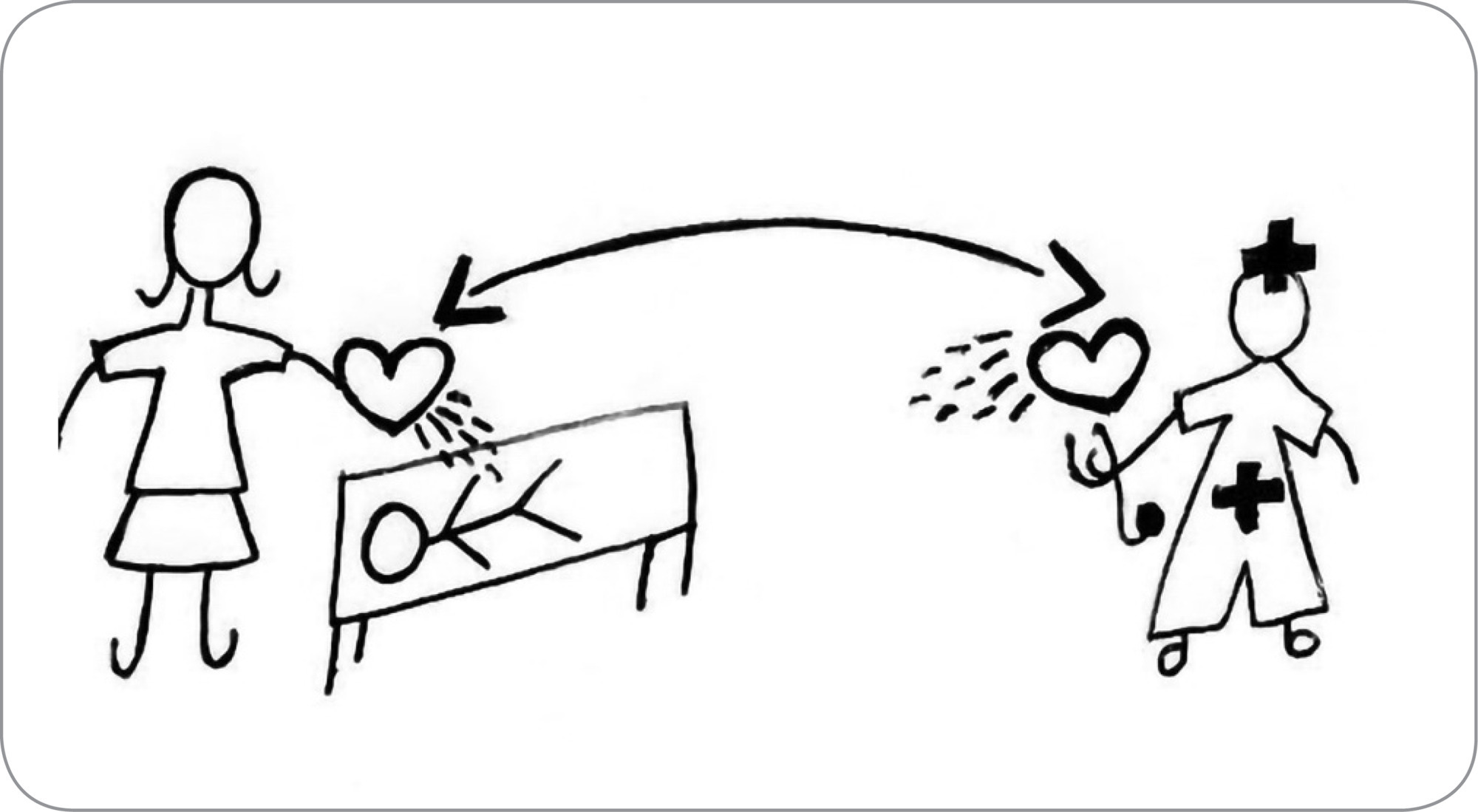
-
ORIGINAL ARTICLE05-28-2021
In(compatibility) of intravenous drugs in critical units: adult cohort
Revista Brasileira de Enfermagem. 2021;74(2):e20200501
Abstract
ORIGINAL ARTICLEIn(compatibility) of intravenous drugs in critical units: adult cohort
Revista Brasileira de Enfermagem. 2021;74(2):e20200501
DOI 10.1590/0034-7167-2020-0501
Views1See moreABSTRACT
Objectives:
To analyze potential (in)compatibilities of intravenous drugs based on the scheduling prepared by the nursing team.
Methods:
historic cohort (retrospective) with 110 adults in critical units. Intravenous medications were identified concomitantly, whose pairs were analyzed for (in) compatibility using the screening system Trissel’s™ 2 Compatibility IV-Micromedex 2.0. Parametric and non-parametric statistic were used according to the nature of the variable.
Results:
565 pairs of drugs were identified. Of these, 44.9% were compatible; and 8.8%, potentially incompatible. Most potentially incompatible pairs involved substances with alkaline pH such as phenytoin (32%) and sodium bicarbonate (8%) and weak acids such as midazolam (12%) and dobutamine (6%), which could result in precipitate formation.
Conclusions:
almost half of the mixtures simultaneously administrated was compatible, which indirectly reflects in the organized work between the nursing team and the clinical pharmaceutic in the discussions and decisions related to time scheduling.
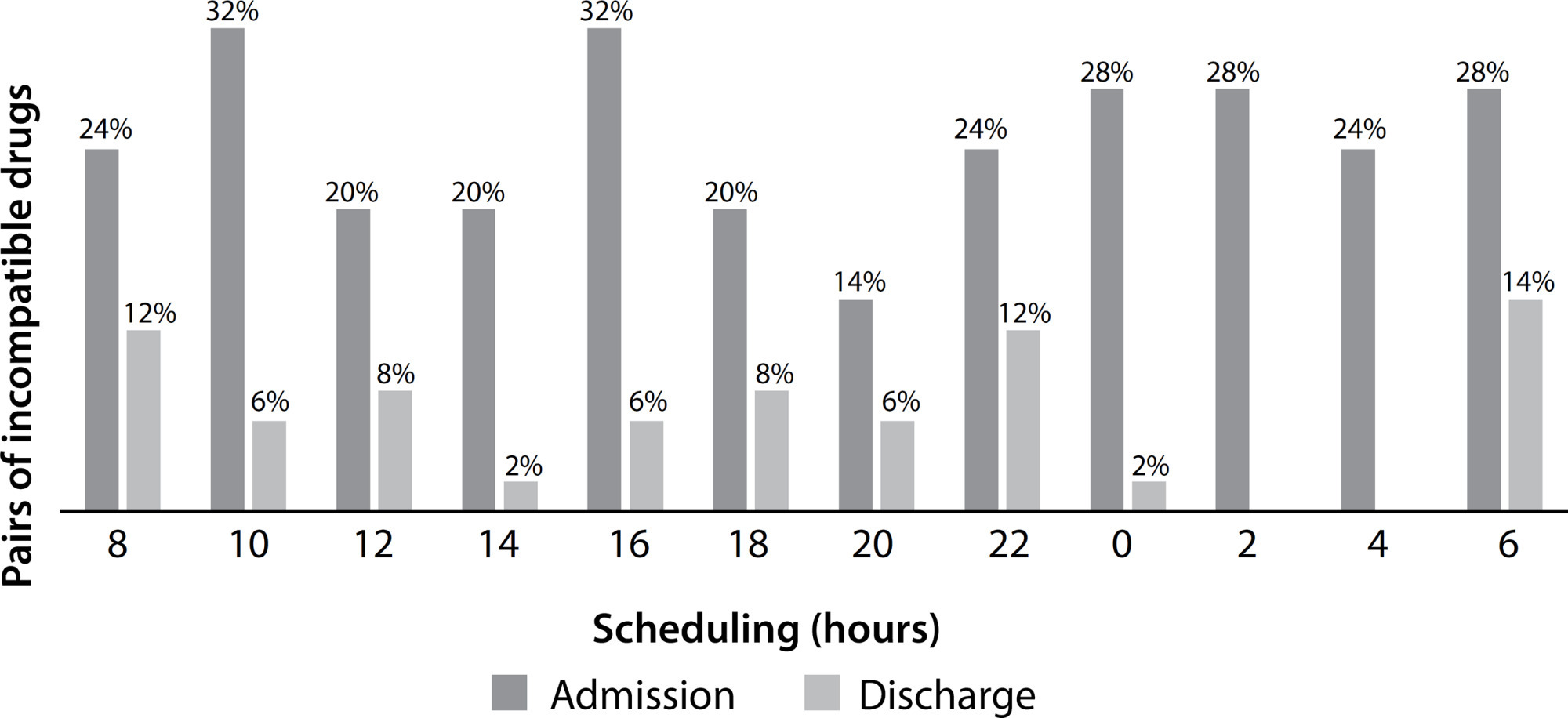
-
ORIGINAL ARTICLE05-28-2021
Prevalence and severity levels of post-radical prostatectomy incontinence: different assessment instruments
Revista Brasileira de Enfermagem. 2021;74(2):e20200692
Abstract
ORIGINAL ARTICLEPrevalence and severity levels of post-radical prostatectomy incontinence: different assessment instruments
Revista Brasileira de Enfermagem. 2021;74(2):e20200692
DOI 10.1590/0034-7167-2020-0692
Views1See moreABSTRACT
Objectives:
to analyze urinary incontinence prevalence and severity in prostatectomized men assessed by three different instruments.
Methods:
a cross-sectional study was conducted with 152 men. The pad test, pad used, and International Consultation on Incontinence Questionnaire – Short Form (self-report) were considered. Data were analyzed using Spearman’s correlation, Kappa index, considering a significance level of 0.05.
Results:
urinary incontinence prevalence was 41.4%, 46.7% and 80.3% according to pad used, pad test and self-report. Positive correlations and moderate to poor agreement were found between the instruments. As for severity, most participants had mild incontinence. The largest number of cases of mild and severe incontinence was identified by self-report.
Conclusions:
the self-report showed higher values for prevalence of mild and severe severity levels. Through the identified differences, we propose that the objective assessment (pad used and pad test) be associated with individuals’ perception (self-report) to better estimate prevalence and severity.

-
ORIGINAL ARTICLE05-28-2021
Cultural adaptation and validation of an instrument about nursing critical thinking skills
Revista Brasileira de Enfermagem. 2021;74(2):e20200720
Abstract
ORIGINAL ARTICLECultural adaptation and validation of an instrument about nursing critical thinking skills
Revista Brasileira de Enfermagem. 2021;74(2):e20200720
DOI 10.1590/0034-7167-2020-0720
Views1See moreABSTRACT
Objectives:
to validate the Nursing Critical Thinking in Clinical Practice Questionnaire regarding cultural aspects and metric properties.
Methods:
a methodological research carried out through cross-cultural adaptation, face and content validity, dimensional construct and known groups validity, test-retest reliability and internal consistency. 511 nurses from four hospitals participated in the study, of which 54 participated in retest.
Results:
the instrument validation for Brazilian Portuguese maintained equivalences, according to the original version. The dimensional validity demonstrated adjustment to the tetrafactorial structure of the original version (GFI=0.69). There were statistically significant differences in critical thinking skills between nurses with graduate degrees and who undertook training, reading articles, developing research and working in an institution with a longer time implementation of the Nursing Process. The instrument showed temporal stability (ICC 073-0.84; p<0.001) and adequate internal consistency (α=0.97).
Conclusions:
the instrument proved to be valid and reliable for the studied population.
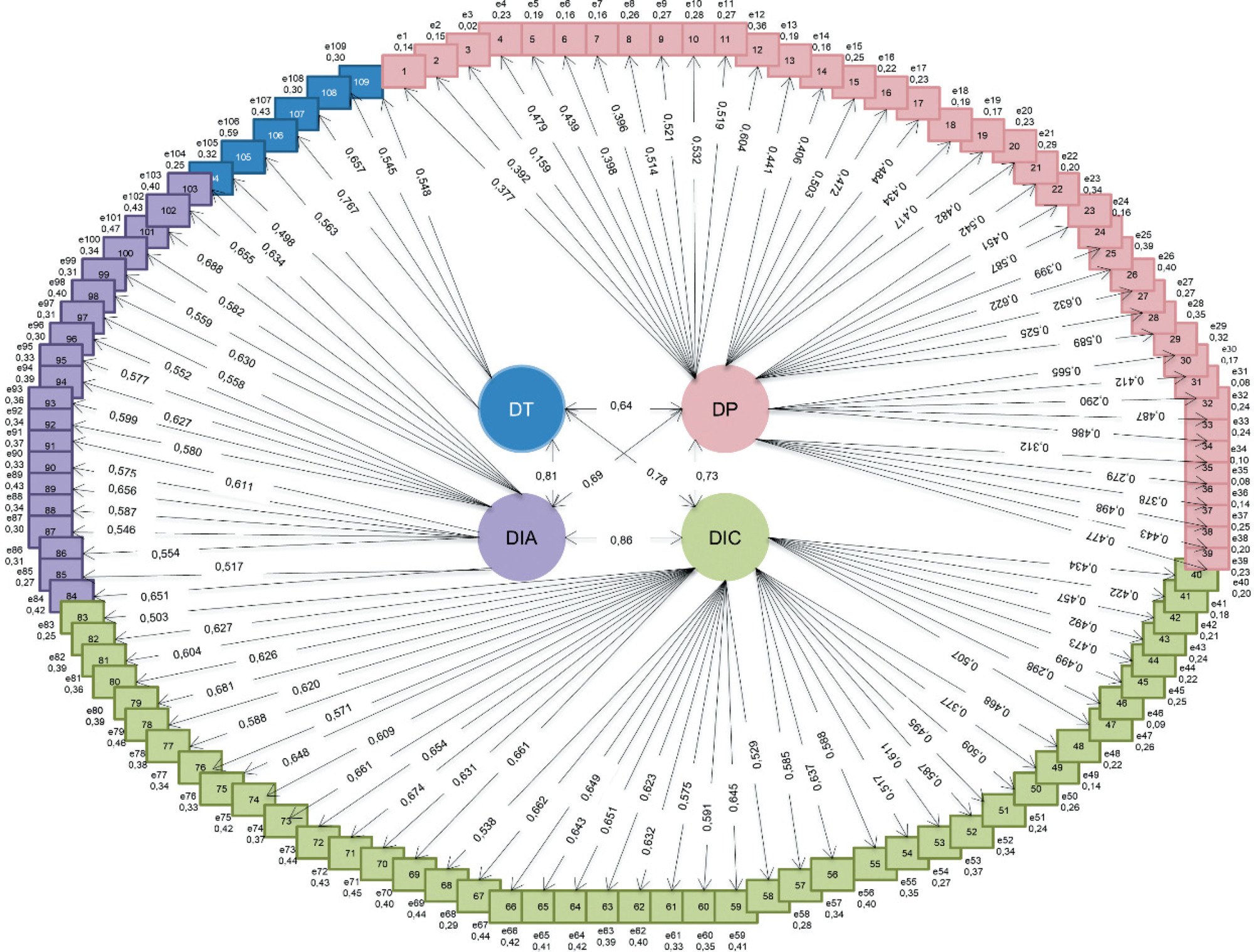
-
REVIEW05-21-2021
Evaluation strategies in active learning in higher education in health: integrative review
Revista Brasileira de Enfermagem. 2021;74(2):e20201055
Abstract
REVIEWEvaluation strategies in active learning in higher education in health: integrative review
Revista Brasileira de Enfermagem. 2021;74(2):e20201055
DOI 10.1590/0034-7167-2020-1055
Views0See moreABSTRACT
Objectives:
to analyze scientific evidence on evaluation strategies for active learning methods in health undergraduate programs.
Methods:
integrative literature review in the Medical Literature Analysis and Retrieval System Online, Latin American and Caribbean Literature in Health Sciences, Nursing Database, Scopus, Web of Science and Education Resources Information Center databases.
Results:
different evaluation strategies are used: Presentation of seminars, Self-evaluation, Evaluation of student performance in Tutotest-Lite tutoring, Peer Evaluation, Active Learning and Critical Thinking Self-evaluation Scale, Objective and Structured Clinical Exam, Portfolio, Progressive Disclosure Questions, Modified Dissertation Questions, Progression Test, Dissertation Test, Objective Test, Immediate Learning Checks, Clinical Case Resolution and Cumulative Test.
Final Considerations:
evaluation strategies in active learning are used in combination, aiming at the affective, cognitive and psychomotor development of the student. However, studies with greater power of scientific evidence would be needed.
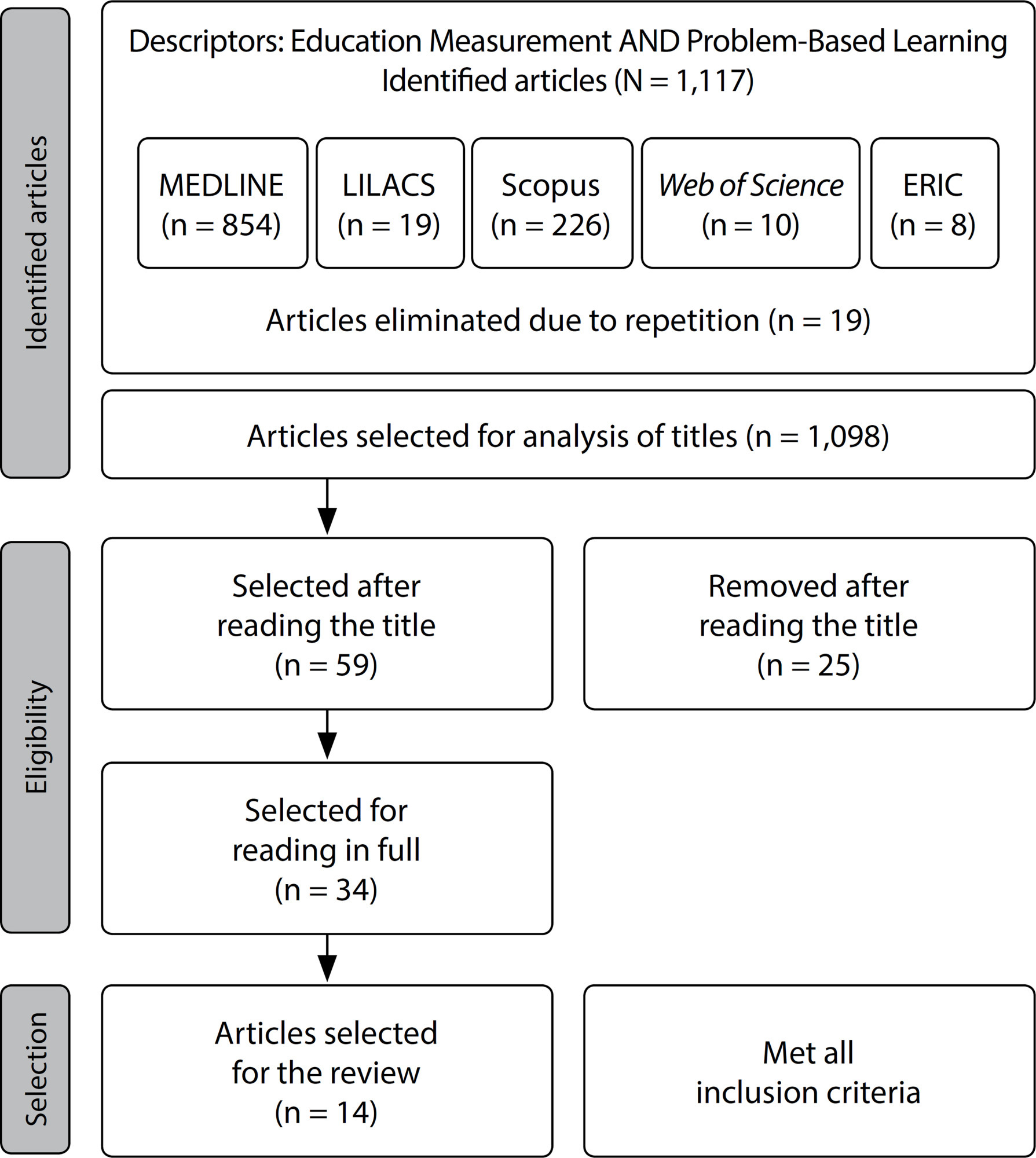
-
ERRATUM04-14-2021
ERRATUM
Revista Brasileira de Enfermagem. 2021;74(2):e2021n2e04
Abstract
ERRATUMERRATUM
Revista Brasileira de Enfermagem. 2021;74(2):e2021n2e04
DOI 10.1590/0034-7167.20217402e04
Views1Article “Obstetric analgesia in labor and its association with neonatal outcomes”, with number of DOI: , published in the journal Revista Brasileira de Enfermagem, 73(5):e20190157, in the header:Where to read:[…]See more -
ORIGINAL ARTICLE07-09-2021
Brazilian Nursing Association: fight for space in the new federal capital
Revista Brasileira de Enfermagem. 2021;74(3):e20200701
Abstract
ORIGINAL ARTICLEBrazilian Nursing Association: fight for space in the new federal capital
Revista Brasileira de Enfermagem. 2021;74(3):e20200701
DOI 10.1590/0034-7167-2020-0701
Views0See moreABSTRACT
Objectives:
to analyze the transfer process of the Brazilian Nursing Association to its new headquarters in Brasília/Federal District.
Methods:
qualitative, socio-historical, and documental study. The analysis generated the following characteristics: Associate reorganization: the transfer from the Central ABEn headquarters; and the Strategies used in the struggle for the appropriation of space.
Results:
the Brazilian Nursing Association was engaged in a struggle, which lasted nine years, for the acquisition of land in the new Federal Capital, Brasília, to ensure a prestigious place for the Association, and for nursing as well.
Final Considerations:
together with their sections, undertook efforts and implemented strategies to find a space in the new Federal Capital, allowing visibility and recognition to the nursing profession.
-
REVIEW06-07-2021
Tuberculosis/HIV coinfection from the perspective of quality of life: scope review
Revista Brasileira de Enfermagem. 2021;74(3):e20200758
Abstract
REVIEWTuberculosis/HIV coinfection from the perspective of quality of life: scope review
Revista Brasileira de Enfermagem. 2021;74(3):e20200758
DOI 10.1590/0034-7167-2020-0758
Views0See moreABSTRACT
Objectives:
to analyze evidence on the quality of life of people with tuberculosis/HIV coinfection.
Methods:
review that followed steps of the Cochrane Collaboration, with the search of publications in the bases Embase, LILACS, PubMed, and Cochrane, through the descriptors “HIV,” “Tuberculosis,” and “Quality of Life,” without a temporal cut.
Results:
the results include 15 studies, published between 2009 and 2019, with the level of evidence V, in its majority. It was observed that there is no uniformity in the instrument used. Psychological support to this group and strengthening of actions to manage both infections are necessary. This segment’s quality of life is associated with social factors and scientific production on the subject concentrated in underdeveloped countries.
Conclusions:
the articles found have a low level of scientific evidence and indicate that people who experience coinfection have a more compromised quality of life when compared to those who experience tuberculosis or HIV separately.
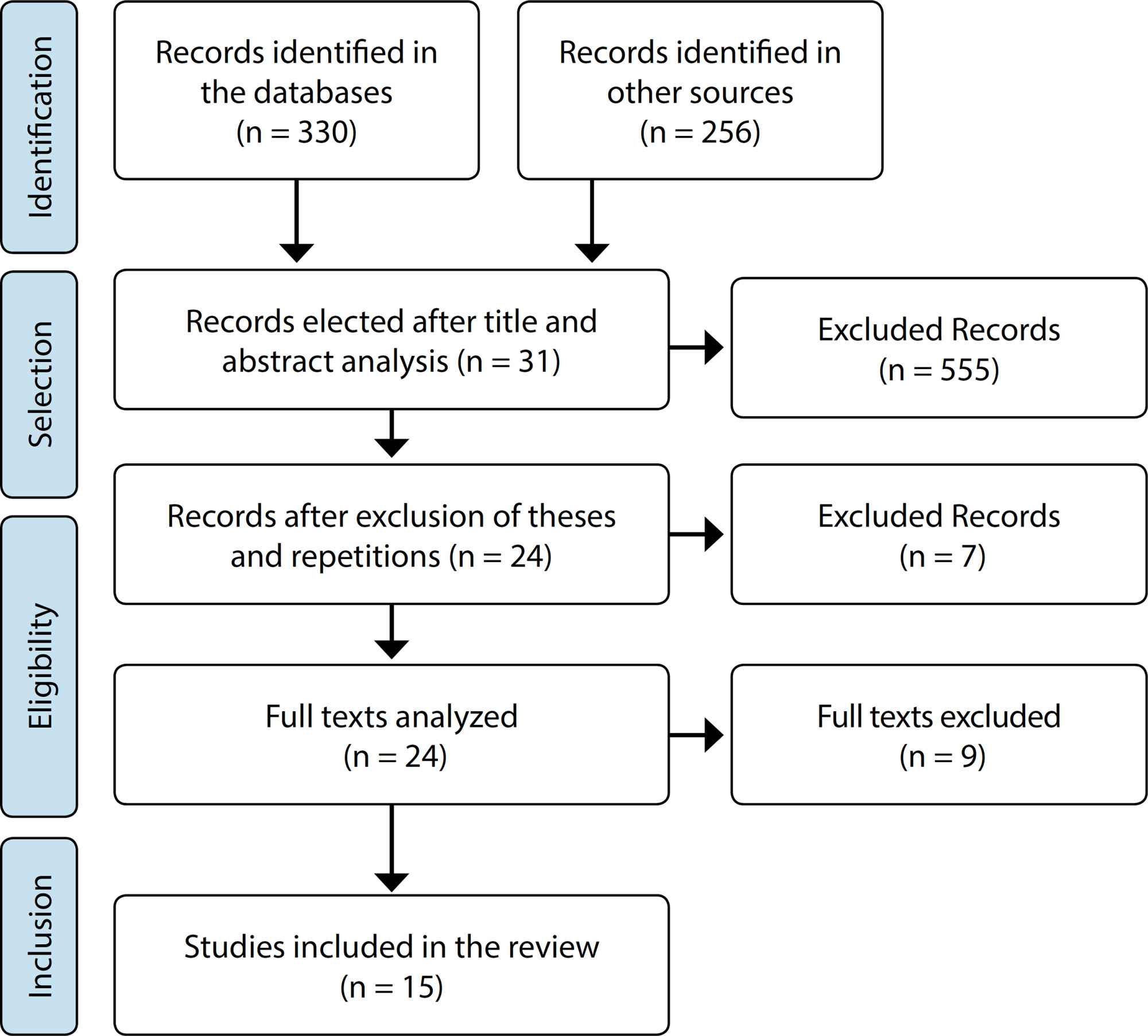
-
ORIGINAL ARTICLE07-08-2020
Self-efficacy in elderly with type 2 Diabetes Mellitus
Revista Brasileira de Enfermagem. 2020;73:e20180980
Abstract
ORIGINAL ARTICLESelf-efficacy in elderly with type 2 Diabetes Mellitus
Revista Brasileira de Enfermagem. 2020;73:e20180980
DOI 10.1590/0034-7167-2018-0980
Views0See moreABSTRACT
Objective:
to analyze the self-efficacy of elderly with type 2 diabetes mellitus and the relationship with sociodemographic, clinical, knowledge, and attitude variables.
Method:
a cross-sectional quantitative study conducted with 256 elderly people enrolled in Family Health Strategies. Data were obtained through interviews. Descriptive statistical analysis and multiple linear regression model were performed (p <0.05).
Results:
female, 69.95-year mean age, white skin color, 4-7 years of schooling, living with a partner, retirees, low individual monthly income, 6 to 15 years of illness, Catholics, living with children (with or without spouse). The elderly’s low knowledge and negative attitude prevailed. Self-efficacy was associated with attitude and knowledge in the domains “General and Specific Diet”, “Physical Exercise” and “Blood Glucose”.
Conclusion:
self-efficacy investigations in type 2 Diabetes Mellitus management in the elderly are important and encourage treatment adherence.
-
ORIGINAL ARTICLE09-18-2020
Nursing recommendations for facing dissemination of COVID-19 in Brazilian Nursing Homes
Revista Brasileira de Enfermagem. 2020;73:e20200260
Abstract
ORIGINAL ARTICLENursing recommendations for facing dissemination of COVID-19 in Brazilian Nursing Homes
Revista Brasileira de Enfermagem. 2020;73:e20200260
DOI 10.1590/0034-7167-2020-0260
Views0See moreABSTRACT
Objective:
to develop a protocol of recommendations for facing dissemination of COVID-19 in Brazilian Nursing Homes.
Method:
a study of experts’ recommendations using a structured form applied through the Delphi Technique, obtaining 100% agreement among professionals after four rounds of analysis. The population comprised six nurses members of the Scientific Department of Gerontological Nursing of the Brazilian Association of Nursing (Associação Brasileira de Enfermagem)
Results:
the protocol was structured in a nucleus of nursing interventions to face the spread of COVID-19 in Nursing Homes, consisting of 8 actions.
Final considerations:
the protocol can help nurse managers to organize assistance to face the pandemic, which can be adaptable to each reality, making training nurses and health teams easier.
-
ORIGINAL ARTICLE07-08-2020
Cognition and quality of life relationship among the elderly community: a cross-sectional study
Revista Brasileira de Enfermagem. 2020;73:e20190030
Abstract
ORIGINAL ARTICLECognition and quality of life relationship among the elderly community: a cross-sectional study
Revista Brasileira de Enfermagem. 2020;73:e20190030
DOI 10.1590/0034-7167-2019-0030
Views0See moreABSTRACT
Objective:
to assess cognitive functions and their association with quality of life among elderly people enrolled in a Family Health Unit (FHU) of Primary Health Care in Recife-PE.
Methods:
a quantitative, descriptive, cross-sectional study in which elderly aged 60 years and over were studied.
Results:
76.7% of the elderly were women and the age group was less than or equal to 70 years. 68.6% had cognitive impairment, and in the quality of life assessment it was found that the social participation facet had the highest mean score among the elderly (14.25), while the lowest was observed in the sensory functioning facet (9.10). There was an association between cognitive decline and quality of life.
Conclusion:
most of the elderly had good quality of life rates, but low cognitive level. Using screening tools allows early detection of health problems, guiding the nursing staff in the construction of preventive measures.

-
REVIEW12-05-2019
Health promotion of frail elderly individuals and at risk of frailty
Revista Brasileira de Enfermagem. 2019;72:319-327
Abstract
REVIEWHealth promotion of frail elderly individuals and at risk of frailty
Revista Brasileira de Enfermagem. 2019;72:319-327
DOI 10.1590/0034-7167-2018-0575
Views0See moreABSTRACT
Objective:
To identify interventions for the health promotion of frail elderly individuals and those at risk of frailty.
Method:
Integrative review of the literature performed in the following databases: LILACS, CINAHL, MEDLINE, Web of Science, COCHRANE and Scopus, using the
Descriptors:
“frail elderly”, “aging”, “health services for the aged” and “health promotion” combined with Boolean operators “AND” and “OR”.
Results:
Randomized controlled clinical trials (RCTs) classified as level of evidence II represented 82.6% of studies. Interventions were analyzed according to the following categories: Interventions for the elderly at risk of frailty and Interventions for the frail elderly.
Conclusion:
The following interventions were identified: educational multiprofessional group meetings, physical training, home visit/home care program, nutrition assessment and supplementation, health maintenance programs and cognitive training; models/programs of management and monitoring, use of assistive technology devices and hospitalization program for geriatric rehabilitation.

-
REVIEW12-21-2020
Skill acquisition of safe medication administration through realistic simulation: an integrative review
Revista Brasileira de Enfermagem. 2020;73:e20190880
Abstract
REVIEWSkill acquisition of safe medication administration through realistic simulation: an integrative review
Revista Brasileira de Enfermagem. 2020;73:e20190880
DOI 10.1590/0034-7167-2019-0880
Views0See moreABSTRACT
Objective:
to investigate evidence that indicates the contribution of realistic high, medium or low fidelity simulation to acquire knowledge, skills and attitudes in safe medication administration by nursing students.
Methods:
an integrative review of experimental studies from MEDLINE, LILACS, Web of Science, Scopus and Science Direct. The descriptors “nursing students”, “simulation”, “high fidelity simulation training”, “medication errors” and “pharmacology” were used to identify 14 studies that answered the research question, and were assessed for accuracy methodological level and level of evidence.
Results:
there was a sample of quasi-experimental studies, (level 3 of evidence; 78.6%) and randomized clinical trials (level 2 of evidence; 21.4%), whose expressive majority showed superiority of the simulation strategy over the traditional methodology (71.4%).
Conclusion:
using low and high fidelity simulators, standardized patients and virtual simulation can promote acquisition of essential skills for patient safety.

-
ORIGINAL ARTICLE10-21-2019
Child and adolescent violence: oral story of women who attempted suicide
Revista Brasileira de Enfermagem. 2019;72(6):1450-1456
Abstract
ORIGINAL ARTICLEChild and adolescent violence: oral story of women who attempted suicide
Revista Brasileira de Enfermagem. 2019;72(6):1450-1456
DOI 10.1590/0034-7167-2017-0814
Views0See moreABSTRACT
Objective:
To unveil expressions of intrafamily violence experienced in childhood and/or adolescence by women who attempted suicide.
Method:
This is a study with a qualitative approach based on Oral Story. Participants were ten women with a history of suicide attempt, who experienced intrafamily violence in childhood and/or adolescence. The research was carried out at the Center for the Study and Prevention of Suicide, linked to a Toxicological Information Center in the city of Salvador, Bahia, Brazil.
Results:
From the orality of women, the study allowed the emergence of the following representative categories of intrafamily abuse experienced in childhood and/or adolescence: psychological violence, rejection, neglect, physical violence and sexual violence.
Final considerations:
The study alerts to intrafamily violence as an aggravation related to suicidal behavior, offering elements that help in the identification of their expressions, which will raise awareness to suicidal behavior and consequently suicide prevention.
-
ORIGINAL ARTICLE10-28-2020
Conflict management strategies used by Portuguese nurse managers
Revista Brasileira de Enfermagem. 2020;73:e20190336
Abstract
ORIGINAL ARTICLEConflict management strategies used by Portuguese nurse managers
Revista Brasileira de Enfermagem. 2020;73:e20190336
DOI 10.1590/0034-7167-2019-0336
Views0See moreABSTRACT
Objectives:
to analyze the perception and conflict management strategies used by nurses in the management of people in Portuguese health services.
Methods:
descriptive, correlational study, carried out in Portuguese health services, with an intentional non-probabilistic sample, totaling 95 nurse managers. A questionnaire and Conflict Management Scale were used, analyzing the variables of managerial activities and conflict management, with the aid of software.
Results:
it was identified that 60% of the managers, report having to mediate conflicts daily, and the majority report adopting dialogue in conduct. However, through the Kruskal-Wallis test, it was shown that enforcement strategies in conflict management prevail (p = 0.008), with collaborative ones being more restricted to monthly intervals (p = 0.049).
Conclusions:
managers perceive the importance of collaboration in the mediation of conflicts, however, in their daily lives; they tend to maintain imposing behaviors, signaling for a little transformational leadership style.
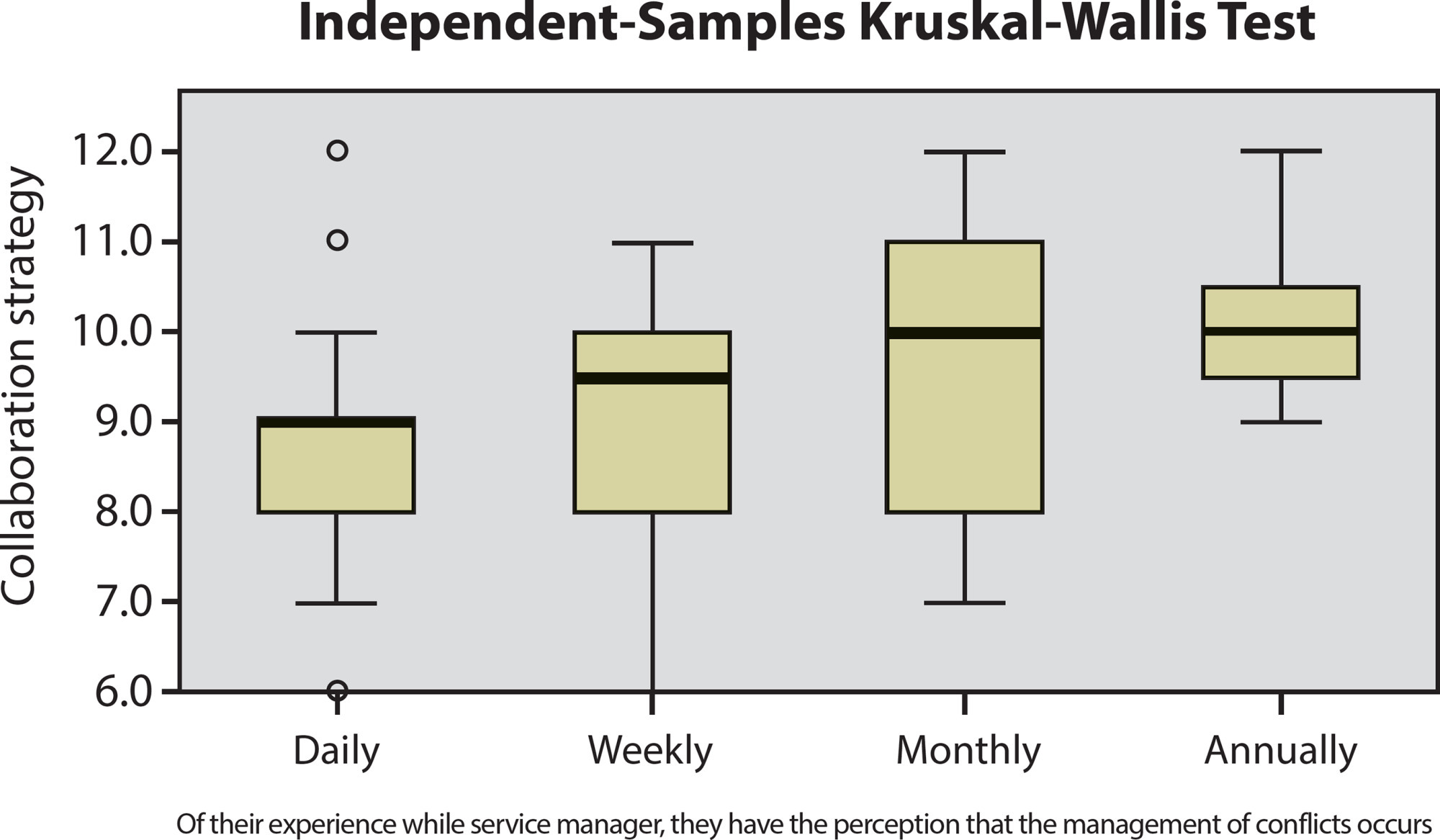
-
ORIGINAL ARTICLE05-18-2020
Expert assessment of the “Neonatal Pain Assessment Program” online course
Revista Brasileira de Enfermagem. 2020;73(4):e20180392
Abstract
ORIGINAL ARTICLEExpert assessment of the “Neonatal Pain Assessment Program” online course
Revista Brasileira de Enfermagem. 2020;73(4):e20180392
DOI 10.1590/0034-7167-2018-0392
Views0See moreABSTRACT
Objectives:
to assess layout quality, visual identity and content of the “Neonatal Pain Assessment Program” (Programa de Avaliação da Dor Neonatal) online course.
Methods:
a descriptive exploratory study. The course was assessed by 24 experts in pain, neonatology and education. A form containing 20 questions on technical, interface and educational aspects was used. For each item, the score ranged from 0 to 1. Mean scores above 0.7 were considered indicative of high quality of the items. Descriptive statistics were used for data analysis.
Results:
navigation, clarity, ease of localization, content relevance, contextualization, content correction, multiple windows, ease of use, ease of return, ergonomics, esthetics, special brands, audiovisual resources, information and portability were assessed. All aspects obtained a mean ≥ 0.70 and no changes were required.
Conclusions:
the Neonatal Pain Assessment Program is considered as quality educational technology and promising strategy for health education.
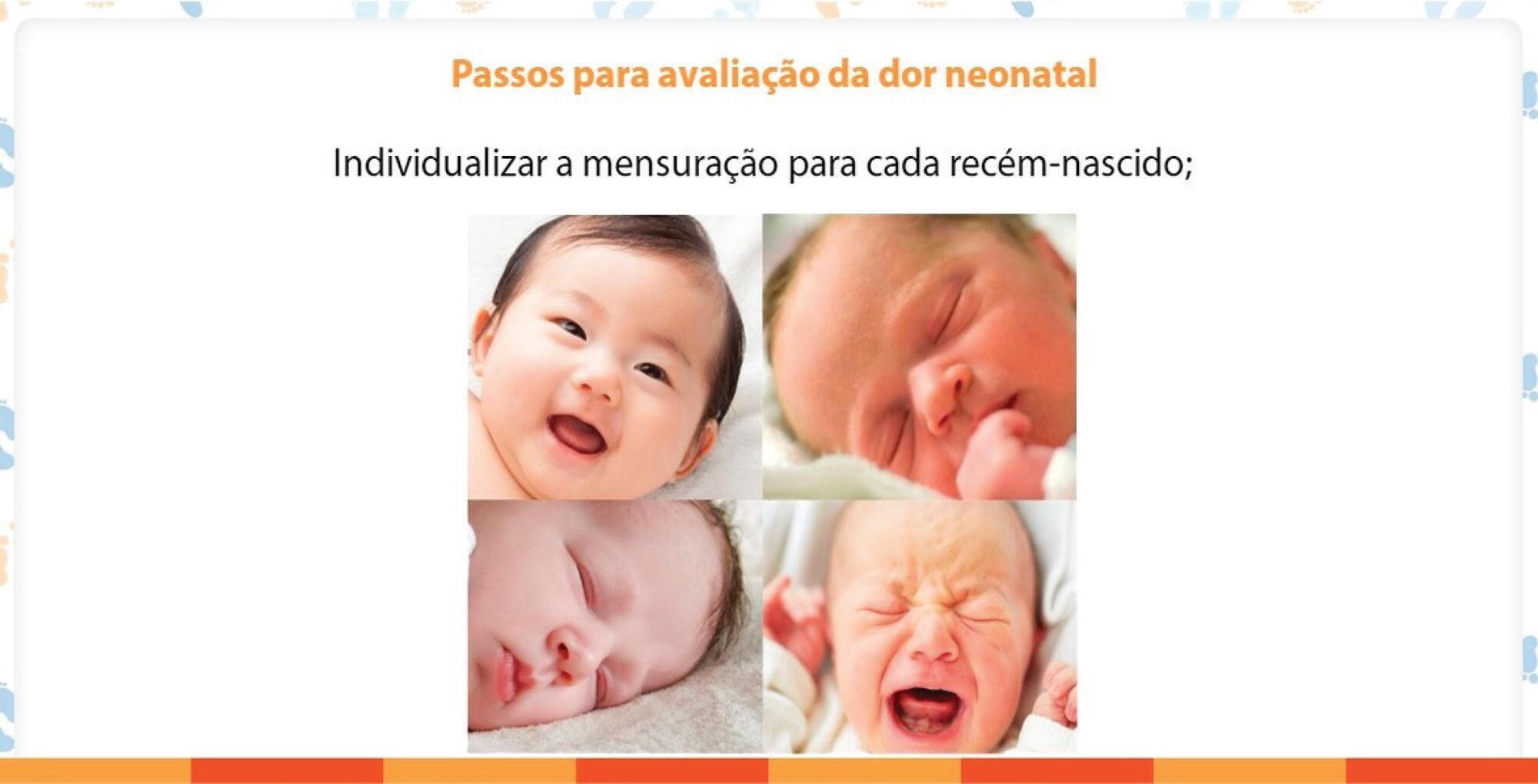
Search
Search in:
Nuvem de Tags
Adolescente (85) Atenção Primária à Saúde (239) COVID-19 (91) Criança (91) Cuidados de Enfermagem (269) Educação em Enfermagem (151) Educação em Saúde (139) Enfermagem (930) Enfermagem Pediátrica (86) Estudantes de Enfermagem (77) Estudos de Validação (131) Família (87) Idoso (208) Promoção da Saúde (99) Qualidade de Vida (104) Saúde do Trabalhador (86) Saúde Mental (145) Saúde Pública (82) Segurança do Paciente (150) Tecnologia Educacional (100)



